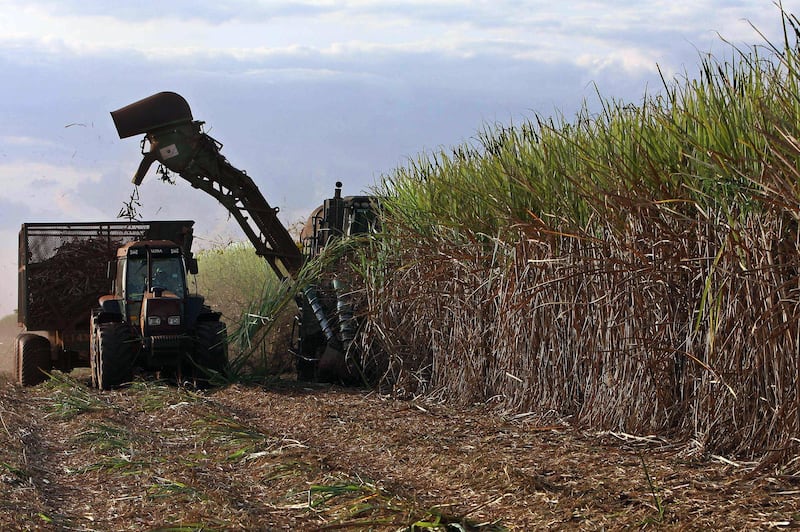The Middle East and Latin America might seem like an odd pair for bilateral commercial deals - at literal opposite ends of the globe from each other, in fact. But there are many links between the Arabian Gulf and Latin America that, combined with strides in economic development in both regions, make a case for a much stronger trade partnership.
Despite cultural and historic ties, economic ties between Latin America and the Middle East remain limited. But there are considerable potential opportunities for improved trade between the two regions, such as tourism, manufacturing and agriculture, according to a recent report from the Dubai Chamber of Commerce and Industry.
For the Gulf states, Latin America represents one of the most dynamic and resource-rich regions in the world. While GCC governments and companies are well placed to support Latin America’s need for investment in infrastructure and can also offer services in logistics, tourism and aviation.
Dubai's non-oil trade with Latin America reached about $4.63bn in 2015, up about a quarter over five years. Brazil accounted for about 67 per cent of total Latin American trade with Dubai, as an exporter of crops such as sugar cane.
At present, commodities dominate bilateral trade – food from Latin America heading to the Middle East accounted for 9 per cent of the GCC’s total agricultural imports in 2016, totaling $4.3 billion. Crude and refined oil from OPEC Middle East members bound for Latin America were around 160,000 barrels of oil per day in 2016.
There is already a cultural link between the Arab and Hispanic worlds.
Historically, Arabs lived alongside the Spanish and Portuguese and ruled much of the Iberian Peninsula for hundreds of years. The legacy of that period lives on. From architecture, to genetics to the Spanish language - which counts more than 4,000 words with Arabic origins. A similar legacy can be found in Portuguese culture as well.
Spain’s colonisation of the Americas and later the Philippines spread Hispanic culture, starting with Christopher Columbus discovering “The New World” (the Americas of the present-day). The Portuguese, with Brazil and territories in Africa such as Angola and Mozambique, have a similar colonial influence, too. In a way, since the Hispanic and Lusophone world were heavily influenced by the Arabs, indirectly their global influence was also an Arab one as well, to an extent.
Modern Arab influence in Latin American can be seen from massive emigration from the Middle East, particularly from the Levant region. Latin America is home to more Arabs anywhere outside the Arab world, ranging from 16 to 30 million descendants. Brazil alone has the largest population of Lebanese descendants in the world with almost 7 million Brazilians of Lebanese descent. Chile has the largest Palestinian population outside the Arab World with almost 500,000 descendants. And - fun fact - the largest mosque in the Americas is in Buenos Aires, Argentina, home to around three to four million Arab descendants, mainly from Syria.
___________________
Read more:
[ Inside Louvre Abu Dhabi's new Roads of Arabia exhibition ]
[ What Brazil's far right president-elect has in mind for the Middle East ]
[ Trump plans to cut Central American aid over migrant caravan ]
___________________
These days, reliance – rather than influence – determines much of Latin America’s current path.
The region’s dependence on the US is illustrative of that, and the current climate is not only economic but also political. The North American Free Trade Agreement (NAFTA) illustrates that Mexico, with its member partners the US and Canada, whose $303bn of exports sales to the US in 2017 accounts for about 81 per cent of its exports. Canada is Mexico’s second biggest export market with about $10.4bn of sales. China is third at $5.4bn. There is no Arab country in Mexico’s top 15 export destinations.
With the current renegotiated NAFTA - spearheaded by President Trump and recast to the United States-Mexico-Canada Agreement - Mexico is looking for more trading partners to diversify trade flows away from the US, underscored by its recent comprehensive free trade agreement with the European Union.
Mexico is not the only Latin American economy actively seeking to diversify its commercial ties away from dependence on the US. In Brazil, for example, China recently overtook the US as its main trading partner.
The GCC, also undergoing economic development transformations, can successfully integrate its capital, know-how and financing of key investment projects across Latin America – not just in agriculture but across oil and gas and large infrastructure and sustainable initiatives in the region. There is certainly opportunity.
Richie Santosdiaz is a UAE-based economic development expert with a focus on internationalisation and an advisor with London-based Pax Tecum Global Consultancy






